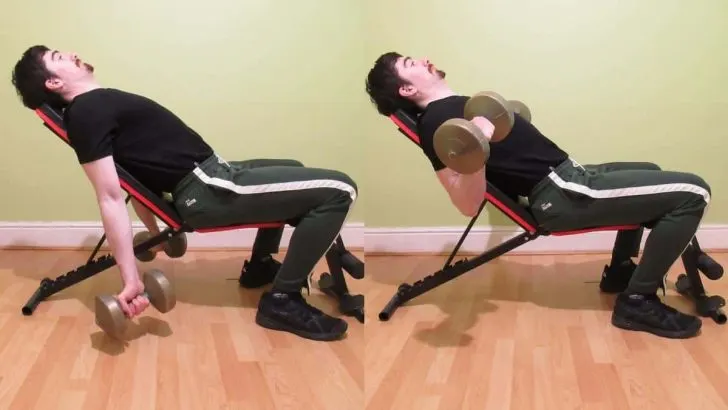The incline dumbbell curl is one of the most effective exercises for developing the long head of the bicep muscle. This is because by curling with your arms behind your body, you’re biomechanically shifting the emphasis onto the outer muscle fibers of the biceps brachii—the long head—which is the only region of the biceps that crosses the shoulder joint.
This tutorial shows you how to do a bicep curl on an incline bench and then discusses the benefits of the movement as well as the alternatives and variations that are possible.
Finally, we’ll finish with an incline DB curl FAQ so that you can make the most of this intense bicep workout drill.
Related: Biceps and back workout
Incline dumbbell curl exercise details
- Main Muscles: Biceps brachii
- Secondary Muscles: Brachioradialis, brachialis, forearm flexors
- Exercise Type: Strength
- Exercise Mechanics: Isolation
- Difficulty Level: Intermediate
- Equipment Needed: Dumbbells, adjustable bench
How to do incline dumbbell curls correctly
- Set the backrest of an adjustable bench to a 45-degree angle. Alternatively, position the back pad to 60 degrees if that’s more comfortable for you.
- Grab two dumbbells with an underhand grip.
- Sit on the bench and lie back with your shoulders pinned against the back pad.
- Let the dumbbells hang by your sides, slightly behind your body.
- Curls the weights toward your shoulders while keeping your elbows still.
- Keep lifting until the undersides of your forearms make forceful contact with your biceps.
- Hold the contraction for a split second, and then lower the weights under control until your elbows reach full extension.
- Repeat for 3-5 sets of 6-12 reps.
Incline dumbbell curl benefits
The dumbbell incline curl has some distinct benefits that conventional bicep exercises simply don’t provide. So here’s what you can look forward to when you perform seated incline curls on a consistent basis.
Better long head development
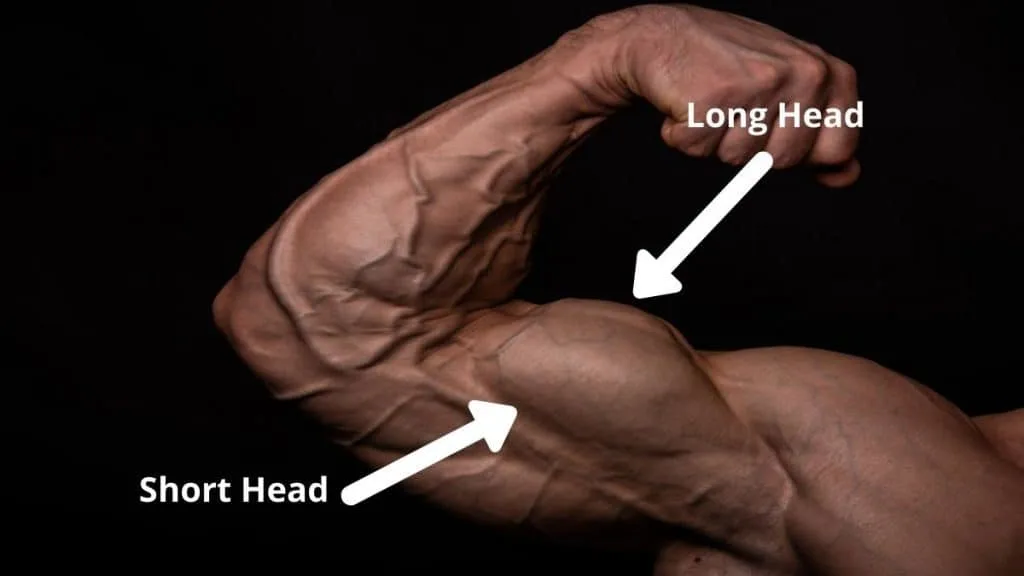
Unlike the short (inner) head of the biceps, the long (outer) head crosses the shoulder joint and becomes more active when you curl with your arms behind your torso. This is significant because many lifters have comparatively worse long head development compared to that of their short head.
So by performing incline dumbbell curls regularly and/or doing a separate outer bicep workout, you’ll naturally sculpt symmetrical arms by building more balanced biceps.
Similarly, the long head is the part of the biceps that’s responsible for creating the elusive bicep peak. Therefore, by making the DB incline curl—the best exercise for bicep peak development—one of your primary movements, you’ll also develop biceps that look fuller from every angle, especially when viewed in a flexed position from behind.
You can also check out our incline curls vs preacher curls comparison if you want to learn how the incline curl stacks up to another popular arm exercise.
Consistent muscle tension
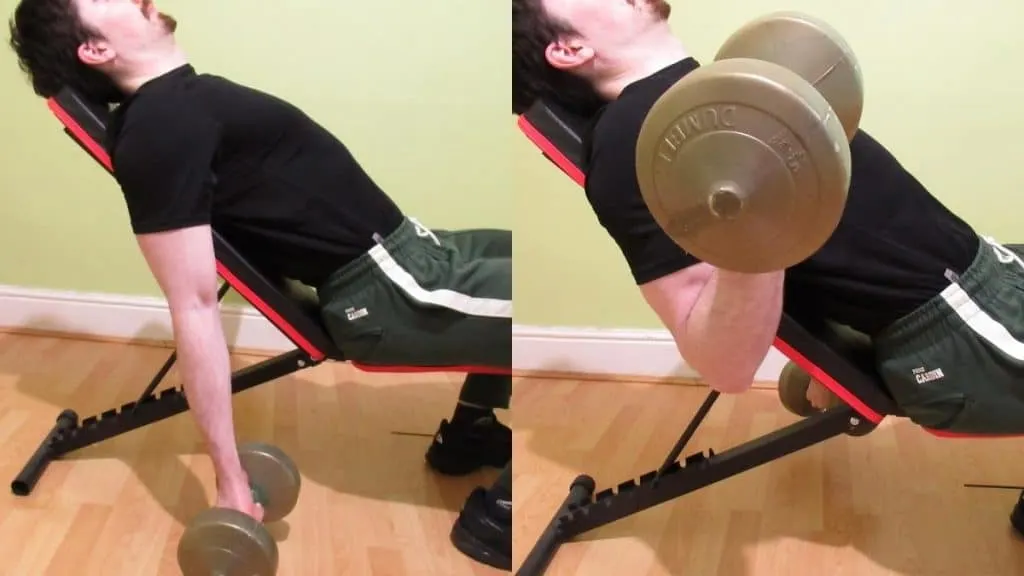
Unlike other bicep dumbbell exercises, the seated incline dumbbell curl provides consistent muscle tension throughout the entire lifting motion that becomes progressively more challenging the higher you curl the weight. [1]
This means that your biceps have to produce more force and thus work harder to lift the weights. In turn, this extra effort results in higher levels of mechanical tension, which is the primary driver of muscle hypertrophy.
So the end result for you is better bicep development if you perform the incline bench curl on a regular basis alongside a healthy, high protein diet and a good recovery regime. [2]
Encourages the use of good form
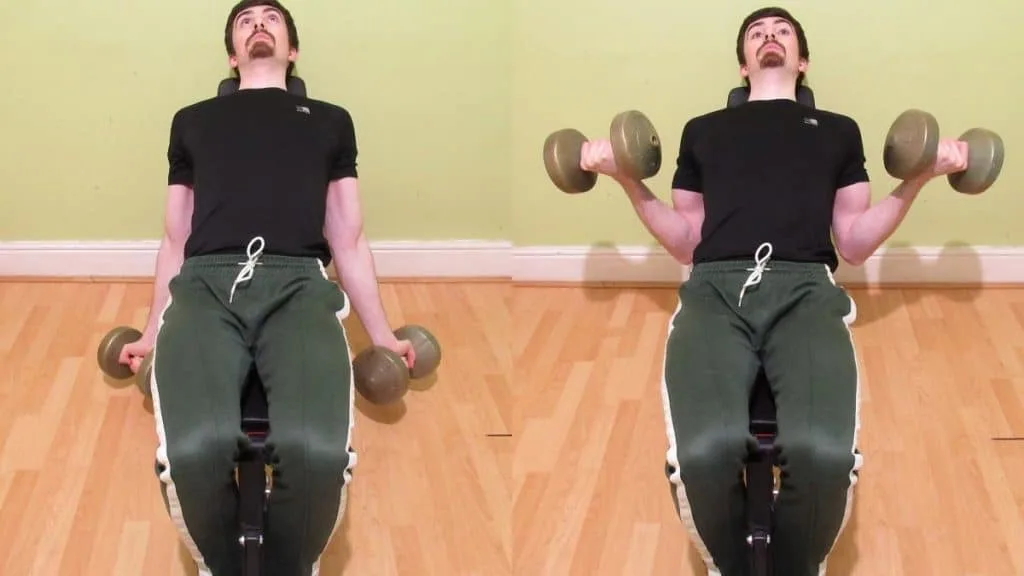
Many lifters have a tendency to swing the weights up during even the most basic bicep exercises in an attempt to lift larger dumbbells. Not only does this practice increase your injury risk, but it also doesn’t result in any extra bicep stimulation. [3]
After all, the extra resistance that you’re able to lift by using the improper form is mainly getting distributed to the other muscles—back, legs, hips, shoulders, etc.—that you’re using to cheat the weights up.
But with incline curls, using the correct technique is much simpler. This is because your legs, hips, and back are all stabilized against the weight bench and thus can’t produce any momentum to help you lift the dumbbells.
Just make sure to keep your elbows still while you curl. While it’s okay to allow a moderate amount of shoulder movement (the biceps is a shoulder flexor, after all), the movement shouldn’t be excessive.
In other words, don’t turn the incline curl into a front raise.
Tremendous muscle stretch
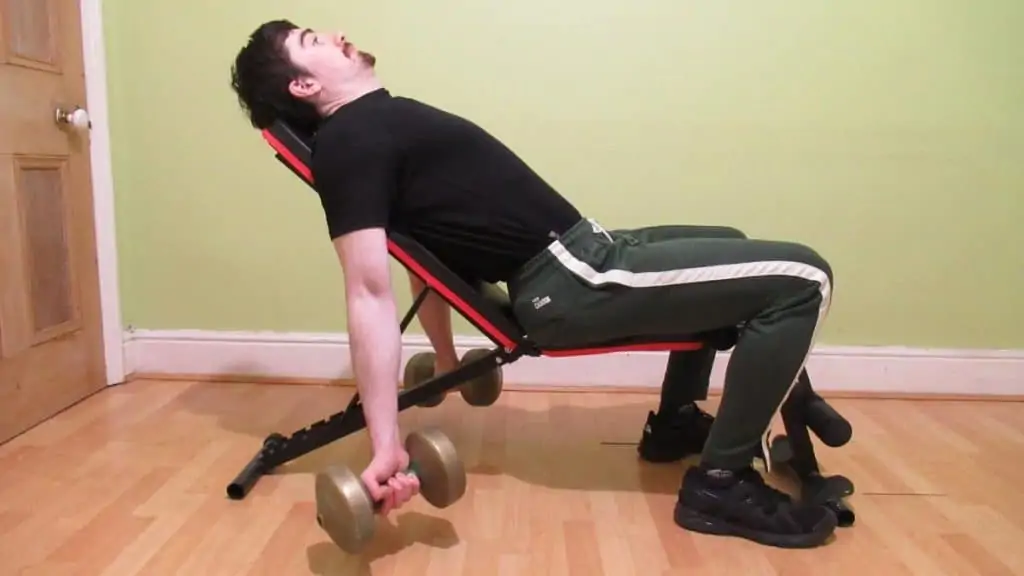
Dumbbell incline curls provide a remarkable, growth-stimulating muscle stretch because they train your biceps in a highly lengthened position.
This is known as the eccentric part of the rep, which research shows is even more critical than the concentric (lifting phase) for achieving hypertrophy.
So if you want to build your lower bicep, the dumbbell incline curl is the most effective movement (better than any of the inner bicep exercises) that you can perform because no other exercise stretches the bicep muscles fibers to this extent.
Make sure to flex your triceps briefly at the bottom of every rep. Since the upper arm muscles work antagonistically, you know that your biceps are maximally lengthened and under tremendous tension when your triceps are contracted.
Incline dumbbell curl alternatives and variations
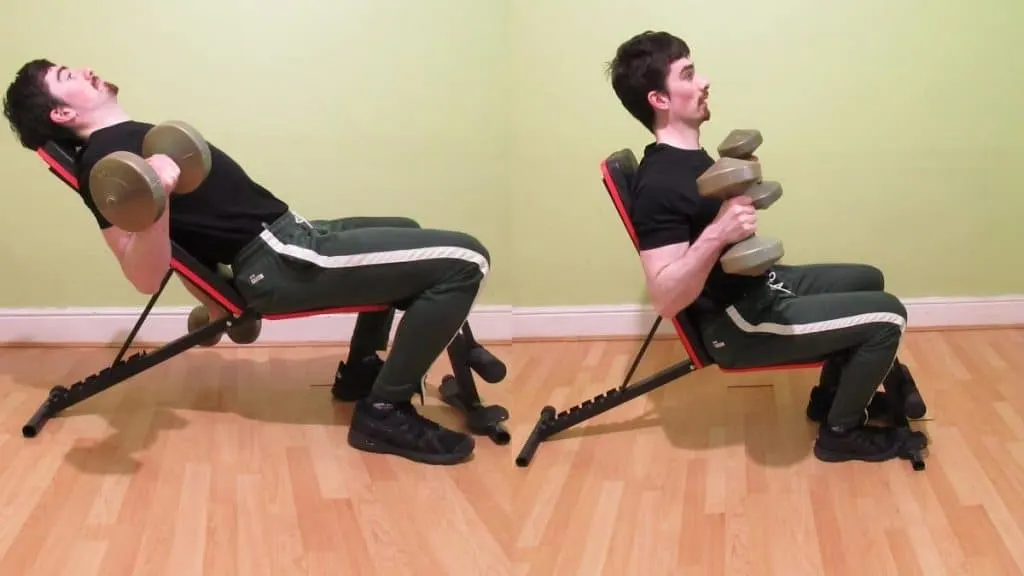
There are more than 7 types of incline dumbbell biceps curl that you can do to build your arms. The best variation for you depends on your goals and equipment availability, so feel free to check out the other types of dumbbell curls below to see which version you like the best.
- Incline cable curl
- Incline hammer curls
- Incline alternating dumbbell curls
- Prone incline dumbbell curl
- Incline inner bicep curl
- Incline reverse curl
- Resistance band incline curl
- Incline kettlebell curls
Incline curl FAQ
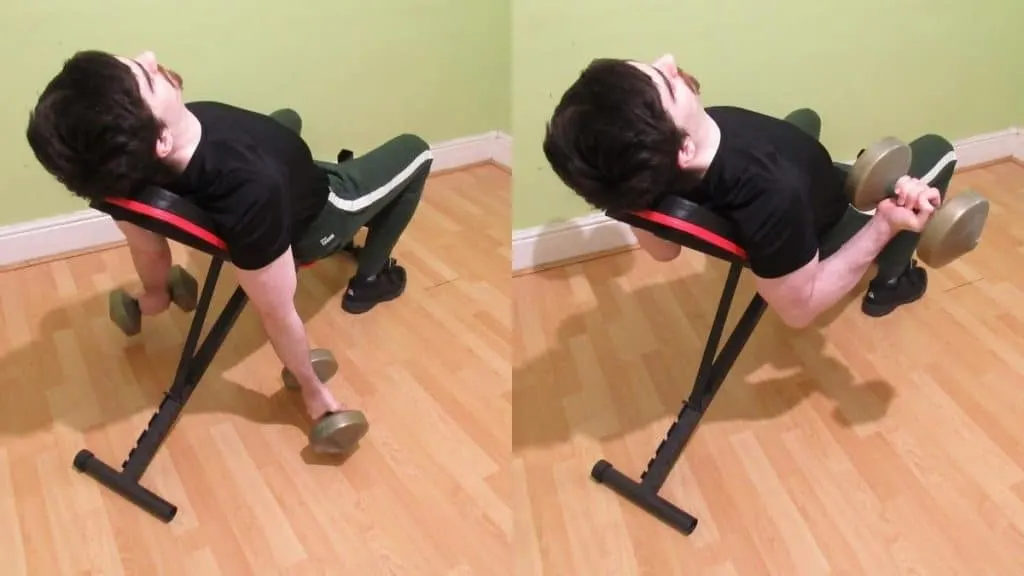
What muscles do incline curls work?
Incline dumbbell curls primarily work the long head of the biceps brachii. Due to the large elbow flexion component of the exercise, incline DB curls also train the brachialis and brachioradialis muscles. Additionally, the movement targets the forearm flexors and, to a much lesser degree, the forearm extensors.
What bench angle should you use for incline dumbbell curls?
An angle of between 45 degrees and 60 degrees is the optimal bench angle for the incline dumbbell curl. If you increase the angle too far beyond the recommended upper setting, then your biceps won’t get put under a proper stretch. Similarly, if you set the bench angle too low, then your biceps won’t receive a good contraction.
How many sets of incline DB curls should you perform?
Perform 3-5 sets of the incline dumbbell bicep curl and do between 6-12 reps on each set. This approach enables you to lift heavy enough to break down the fast-twitch muscle fibers, but it also lets you do enough reps to accumulate sufficient training volume, which is very important for muscle growth.
Is the incline bicep curl good for building mass?
Yes, seated incline dumbbell curls are an excellent exercise for building mass. This is because they place the biceps under high amounts of mechanical tension, which, in addition to performing sufficient training volume, is essential for stimulating hypertrophy.
Read More: Superset bicep workout │Bicep circuit training
Conclusion: How effective are incline curls?
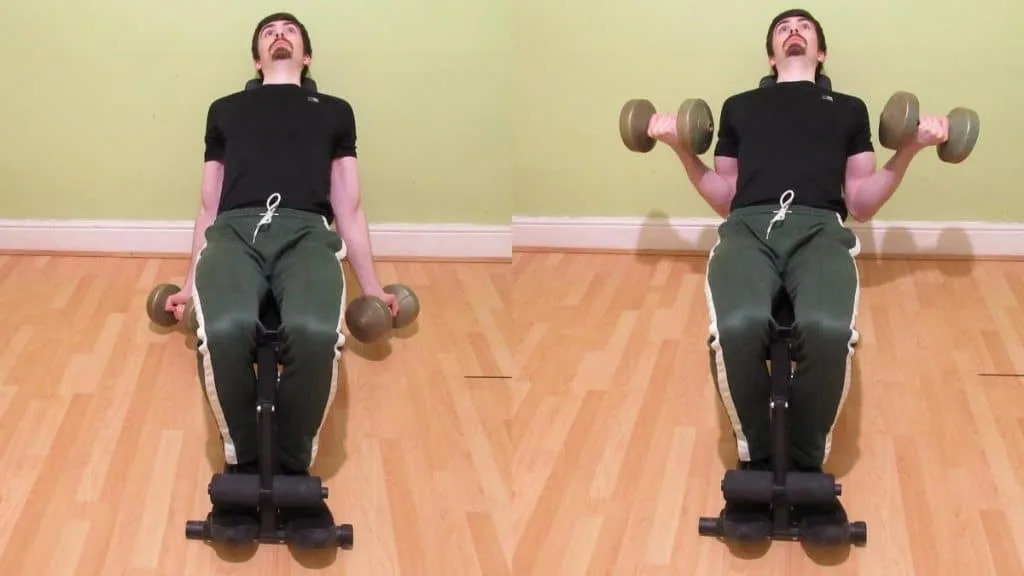
The incline dumbbell curl is highly effective for building the biceps. Weight lifters have been getting great results from incline curls for decades, and the exercise also has an impressive track record in the sports science literature.
Additionally, the incline bench dumbbell curl is an excellent movement for novice trainees who are still learning the resistance training ropes. Since your upper body is stabilized against the bench and your feet are planted firmly on the floor, there’s much less room for error because you can’t swing the weights up with your other muscles as effectively.
For the best results, make sure to keep your shoulders pinned back as you curl the dumbbells. Many rookie weight lifters will roll their shoulders forward as their biceps fatigue in order to generate momentum. However, you’re much better off using a lighter weight and lifting with the proper form because you’ll stay further away from injuries and place more tension on the target muscles.
References
- Oliveira, L. F., Matta, T. T., Alves, D. S., Garcia, M. A. C., & Vieira, T. M. M. (2009). Effect of the shoulder position on the biceps brachii emg in different dumbbell curls. Journal of Sports Science and Medicine, 8(1), 24–29. https://pubmed.ncbi.nlm.nih.gov/24150552/
- Leal, D. (2020, July 28). The Best Nutrition Tips for Muscle Growth. Verywell Fit. https://www.verywellfit.com/are-you-eating-for-muscle-3121316
- Jonasson, P., Halldin, K., Karlsson, J., Thoreson, O., Hvannberg, J., Swärd, L., & Baranto, A. (2011). Prevalence of joint-related pain in the extremities and spine in five groups of top athletes. Knee Surgery, Sports Traumatology, Arthroscopy, 19(9), 1540–1546. https://doi.org/10.1007/s00167-011-1539-4

